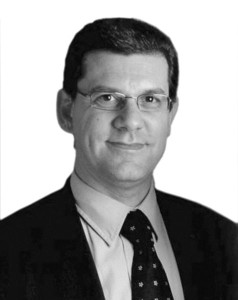Whenever we speak of revolutions, we imagine a great upheaval owing to which the revolution result overcomes and annuls what were our customary habits shortly before. It is the case of the “Copernican revolution”, of the “industrial revolution”, of peoples’ all revolutions: from the October one to the American and French. The etymology itself of the word confirms it: in Latin, revolutio -onis, in fact, means “upheaval, return “, derived from the verb revolvere “to reverse”.
Some situations of our future life (machines that move autonomously, equipped with intelligence, systems that communicate and interact with man trying to foresee his choices, customized products tailor-made, production systems that self-configure, ask for raw materials, book maintenance interventions …) were prerogative of some authors defined science fiction writers. Today it is no longer like that: the so-called “visionary” foresee, just through what is defined “the fourth industrial revolution”, a new manufacturing world whose foundations are defined by the higher and higher skills in collecting and managing data and information through an intelligence distributed in machines and manufacturing systems. Is that such a new thing? Not precisely: for several years now, machines have been interfaced one another or with a central system of data collection and analysis, equipping them with opportune sensors, but never like now, those that were highly advanced sporadic examples are becoming the normality of next years.
As you can read in the next pages, too, there are projects and indications provided by outstanding central governments about what is defined “Industry 4.0”.
Where are the previous revolutions hidden? The first dates back to the end of 1700 where the first looms were driven by steam machines, the second concerns the mass production starting, thanks to the use of the first electric motors in the second half of the nineteenth century and the third occurred at the beginning of the Seventies of last century due to the introduction of electronics and IT (information technology) that have allowed the first examples of production automation.
The fourth, which we are experiencing, will be progressive like all previous ones but as inexorable (what plants are still steam-operated today or without electronic components?) and concerns the introduction of physical cyber-systems able to interact and to communicate one another with a good amount of smartness, to be able to take the right decisions at the right time and to make manufacturing systems as flexible as possible both in terms of response capability to the demands for products with variable volumes in time and of production of customized products upon single job order. Implications are manifold: systems that self-optimize, that autonomously order raw materials and that self-configure or independently ask for maintenance interventions. This is possible by supplying the right interfaces and by developing the suitable software but it is also enabled by the need of supplying machines with all those sensors and behavioural models that allow a forecast of the system operation.
I like examples and I resist the temptation neither in this case. Let us consider a car tire. Some years ago, to know if the inflation pressure was right, it was necessary to go to a petrol station and to measure the pressure. Today several cars are equipped with a sensor that reports the pressure value of all tires on the dashboard. This simultaneously frees us from making useless controls and from finding dangerously deflated tires because we forgot calling on the tire repairer. At each car starting, a signal warns us to provide for the correction of the situation judged anomalous. Our car is now full of sensors and several aspects of its operation are connected with signals coming from these sensors. A software manages this information and decides how to configure the car running (for instance the system that manages power and braking system to avoid losses of vehicle adhesion). More advanced the automated parking system that detects also elements outside the system. The next steps might consist in making machines dialogue one another to allow their autonomous operation, in which driving becomes a no longer necessary element, apart from determinate cases.
Sensors, systems of collection, processing and merging of information, intelligence and interfaces are then the current and next future challenges to allow our companies not only to remain competitive but also to take advantage of these more and more performing systems of holistic management of systems. An ending remark: we must distinguish between revolution and revolt. A revolt is an immediate action, not mediated and not managed. The revolution is, on the contrary, organized with opportune theories and ideologies driving it and making it a more complex and durable action in time.



